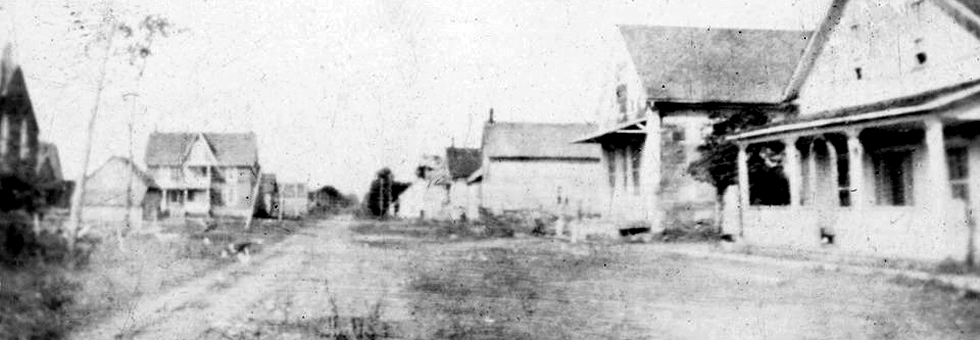When “Mac” Williamson from Baltic’s Corners died last October, the province of Ontario was still in Covid lockdown mode. Quite rightly, Brenda Kennedy decided to wait until a time withfewer restrictions to host a public celebration of her partner’s life. And that time has come.On Saturday, July 16th at 2:00 pm in the Dunvegan Recreation Hall, Mac’s friends and acquaintances will join Brenda to say goodbye to this unique individual.
Mac Williamson was a gentle soul whose generosity was like a magnet to abandoned animals, forgotten objects and even off Broadway political causes. All those who had the privilege of knowing Mac, sorely miss him. Brenda hopes that you will join her at this celebratory event. She tried her best to extend a formal invitation to as many of Mac’s friends as she could, but admits that she may have inadvertently missed someone. If you knew Mac and would like to attend, you are more than welcome to do so.
Spread out, not deserted
I’m told that many of the Facebook photos of this year’s Smith-in blacksmith festival at the museum a few weeks ago had a ‘ghost town’ look about them. And yet curator Jennifer Black reports that the total attendance of around 340 paying visitors over the two days — while down a tad — was very close to the 2019 total; 2019 being the last time the event was held. “It did look a bit deserted, but the attendees were just spread out,” Jennifer emailed me.“Every time the sun came out… a little influx of visitors would arrive.” This year’s festivalattracted fewer blacksmiths. However, Jennifer wonders if perhaps sky-high gas prices played a role. Nevertheless, out-of-region practitioners of anvil art drove from as far away asVirginia, Pennsylvania, Arkansas, Kingston, Peterborough, Montreal and Quebec City.“Everyone enjoyed seeing faces they had not seen in a while,” Jennifer concluded. “The museum is happy to be welcoming visitors again to events such as this.”
Big yellow visitors
Another welcome sign that life might be getting back to normal is the convoy of big yellow school buses that rolled into Dunvegan this past Monday morning. They had come all the way from Kanata with 165 second and third grade students. Pre-pandemic, the museum had developed a very well received introduction to the pioneer period of Canadian history. I’m happy to see that schools, in Kanata at least, haven’t ‘cancelled’ this key time in our nation’s development and replaced it with a compulsory course on guilt and self-loathing for young children.
Where’s the crop?
No doubt our municipal officials are keeping a close eye on it, but I notice that the field bordering Dunvegan Road on either side of the entrance to the Dunvegan Quarry now lies fallow. Since North Glengarry’s official plan was amended in 2005 to allow for mineral extraction on the northern portion of Lot 18, Concession 9 (Kenyon), local farmers have rented the front field for cultivation. But this year Cornwall Gravel widened the entrance, moved the steel gate and blocked the traditional access to the property with a page wire fence. And I’m told that calls to the owner from the tenant farmer who has worked this land in recent years have gone unanswered.
I was also surprised to learn that the only field that’s ever been under cultivation since Cornwall Gravel acquired the property is the one right beside County Road 24. Theremaining fields designated General Agriculture (AG-20) in Schedule “A” of the By-law amendment have never been touched. In other words, the owner has paid lip service to keeping the southern part of Lot 18 agriculturally productive by farming the small bit visible from the road. No doubt this is their right; everything else seems to be. But it strikes me that this was not the intent of the Ontario Municipal Board Decision #3192 issued on December 6th, 2005.
Tin truck treasure
Last month, Dunvegan resident Robert Campbell was quietly enjoying his Saturday morning copy of the Ottawa Citizen when he turned a page of the Homes & Condos section and came face-to-face with something from his childhood. Robert, like Terry and I, enjoy John D. Sewell’s “Antiques” column. Each week, Sewell features treasured items submitted by readers and provides a brief appraisal and estimated value. And on Saturday, May 19th, the column displayed a photo of a red metal toy oil tanker. The truck still had its original paint and Imperial Esso decals, and was 27 inches long and seven inches tall. The only real difference between the reader’s truck and Robert’s was the decals. Robert’s lacked the Esso stickers.
Sewell confirmed that Otaco Limited of Orillia had manufactured the large truck, a company that started making pressed steel construction toys in the 1940s and expanded its lone to include trucks in the 1950s. The firm closed its doors in the 1960s. The major appeal of these toys was that their young owners could ride them, which explains why it’s so hard to findspecimens that haven’t been loved to death. Given its decals and “gently-used condition,” Sewell appraised the value of his reader’s oil tanker at $1,000. I dropped by to see Robert’s toy and its condition fell more on the “used” side than “gently.” Not that Robert is interested in selling the gift he may have received from Santa one year.
Incidentally, if you’d like one of these trucks, Robert spotted numerous vendors with them at the Lachute flea market a week after Sewell’s column appeared, some of which were going for $1,500.
-30-
